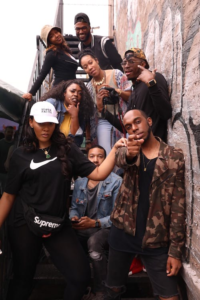While many brands are becoming more racially inclusive in 2023, certain brands are taking a step back. If you launch a multicultural marketing or advertising strategy without doing ethnic market research, you’ll struggle to create content that resonates with your target audience.
In fact, there’s a high chance you’ll end up doing more harm than good. In this blog, we’ll offer a closer look at three examples of tone-deaf minority advertising that left consumers irate. We’ll also touch upon the importance of correcting such mistakes and preventing them altogether by performing multicultural market research beforehand. Let’s begin.
1. Gap’s Ellen DeGeneres Kids Clothing Campaign
https://twitter.com/TheRoot/status/717488007310389248
In 2016, Gap launched an ad for its Ellen DeGeneres kids line that caused a lot of uproar, and rightfully so. In the ad, you can see a Black girl being used as a prop—more specifically, an armrest—by white actors.
People immediately took to social media and pointed out that while the white girls are striking powerful poses, the Black girl is being used as a passive token. Gap ended up taking the ad down, but this entire fiasco could have been easily avoided had Gap understood the lack of Black empowerment in the media.
Even if Black people are represented in the media, they’re seldom highlighted as powerful, capable, and assertive people who have agency. To achieve greater ethnic representation, we must take a step in this direction. Gap proved that it failed to adequately research and understand its audience before launching the campaign.
Recommended Read: How Disproportionately Targeting Consumers of Color Can Work Against Your Brand Image
2. Nivea’s “White is Purity” Campaign
https://twitter.com/ScottProfessor/status/849387351604441091
Nivea’s racist “White is Purity” ad sparked a nationwide debate. By associating the color white with purity, the brand intentionally or unintentionally implied that Black is impure. The company pulled this ad but suffered a major reputational loss.
How could this have been prevented? By getting the ad cross-checked by ethnic marketers and research experts. This ad makes it very obvious that it was created, edited, and approved by white people, with not a single Black person present in the room.
3. Kendall Jenner’s Pepsi Commercial
https://twitter.com/i_D/status/849689406105686018
This is perhaps the most widely known example of tone-deaf minority advertising. The ad shows Kendall Jenner handing over a Pepsi can to a white police officer during a protest. She does this to placate the officer and restore peace.
The obvious implication? White people can easily walk in and save the day through ridiculous gimmicks like handing over a refreshing drink to an officer. The ad downplayed the criticality of Black violence in America and glamorized it.
How and why did this happen? Like the previous brands, Pepsi failed to research its target audience and run the ad by ethnic researchers, marketers, and advertisers.
As a trusted multicultural market research agency, we perform qualitative and quantitative research to reveal rich insights about ethnic consumers. If you’re worried about launching an insensitive, tone-deaf, and offensive multicultural advertising campaign, start by understanding your audience better.
We collect ethnic data to help you understand your target audience’s unique preferences, buying habits, and more. Our team uses different research methodologies to fetch explanatory and numerical data about specific ethnic groups. We don’t stop until we obtain a complete picture of your ethnic audience.
Contact our multicultural market research experts today. For more insight, explore our story. It’s time to capture your audience’s attention the right way. If you have further questions about tone-deaf minority advertising, feel free to contact us.







